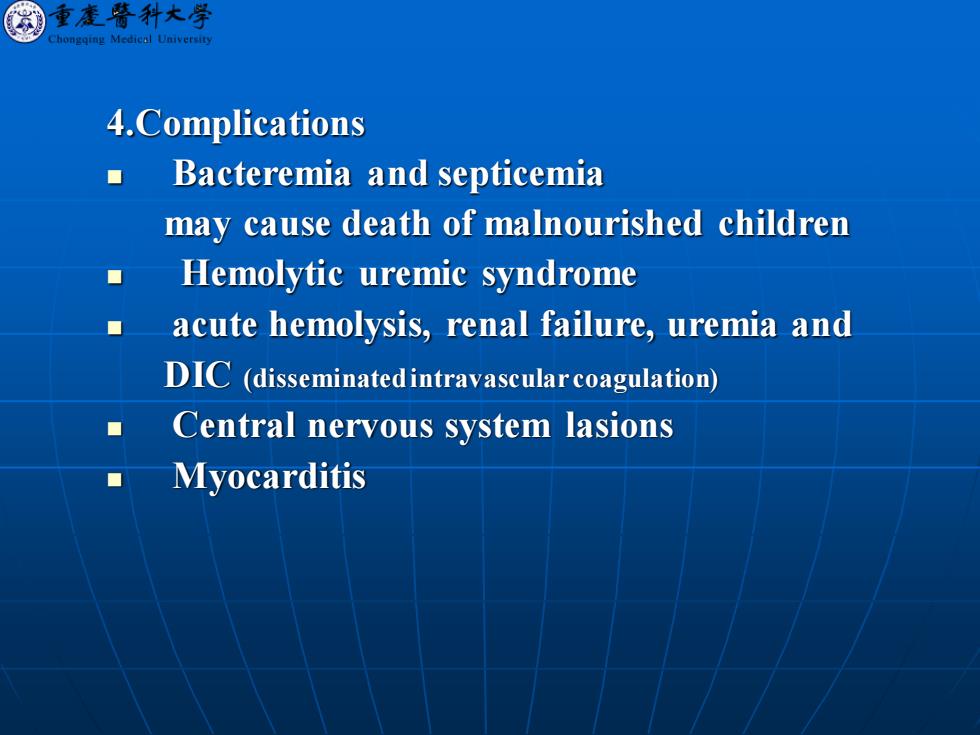
烟童走普科大 ongqins里Med山eal Univers 4.Complications Bacteremia and septicemia may cause death of malnourished children Hemolytic uremic syndrome ■ acute hemolysis,renal failure,uremia and DIC(disseminatedintravascular coagulation) Central nervous system lasions Myocarditis
4.Complications ◼ Bacteremia and septicemia may cause death of malnourished children ◼ Hemolytic uremic syndrome ◼ acute hemolysis, renal failure, uremia and DIC (disseminated intravascular coagulation) ◼ Central nervous system lasions ◼ Myocarditis
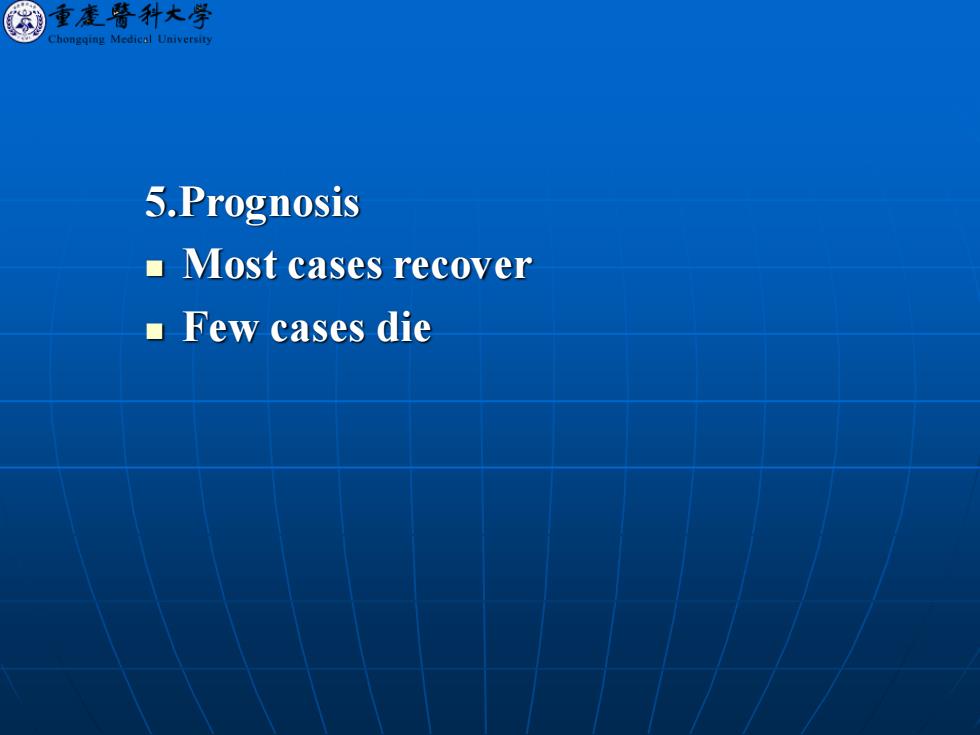
重麦等科大学 nongging Medical University 5.Prognosis ■Most cases recover ■Few cases die
5.Prognosis ◼ Most cases recover ◼ Few cases die
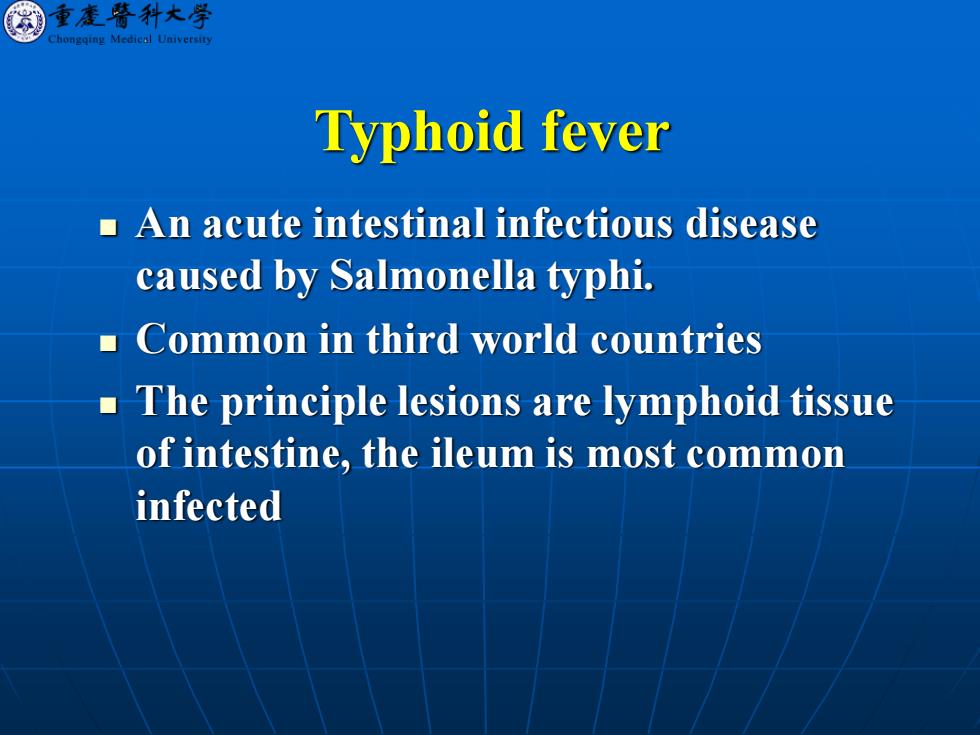
烟童走普种大导 ongqing Medical University Typhoid fever An acute intestinal infectious disease caused by Salmonella typhi. Common in third world countries The principle lesions are lymphoid tissue of intestine,the ileum is most common infected
Typhoid fever ◼ An acute intestinal infectious disease caused by Salmonella typhi. ◼ Common in third world countries ◼ The principle lesions are lymphoid tissue of intestine, the ileum is most common infected
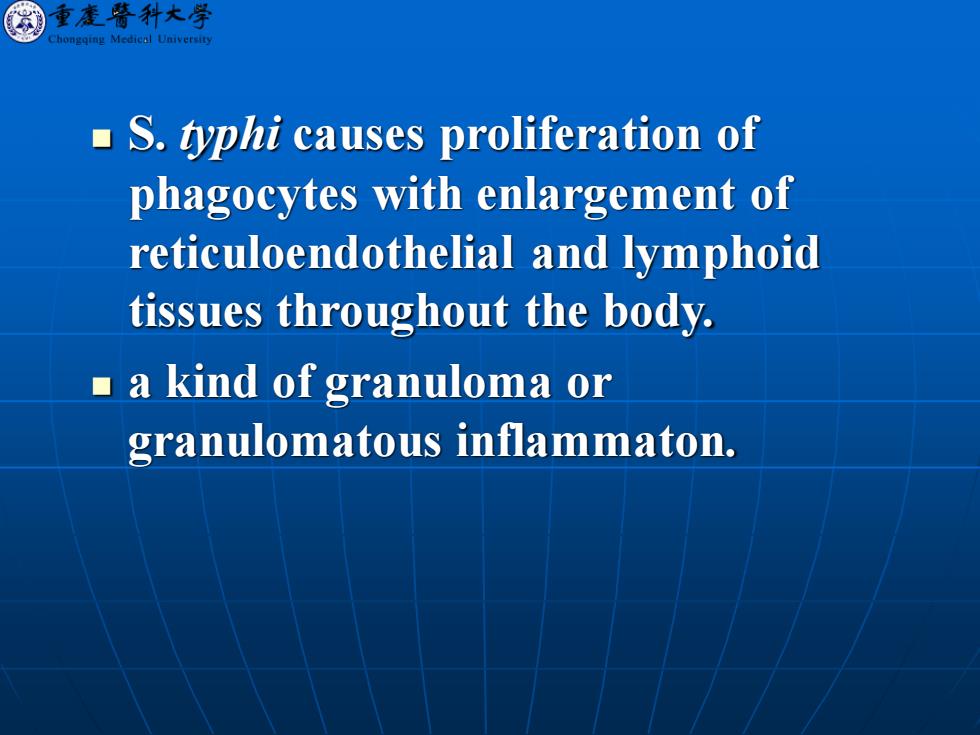
树 重瘥普科大骨 S.typhi causes proliferation of phagocytes with enlargement of reticuloendothelial and lymphoid tissues throughout the body. ■a kind of granuloma or granulomatous inflammaton
◼ S. typhi causes proliferation of phagocytes with enlargement of reticuloendothelial and lymphoid tissues throughout the body. ◼ a kind of granuloma or granulomatous inflammaton
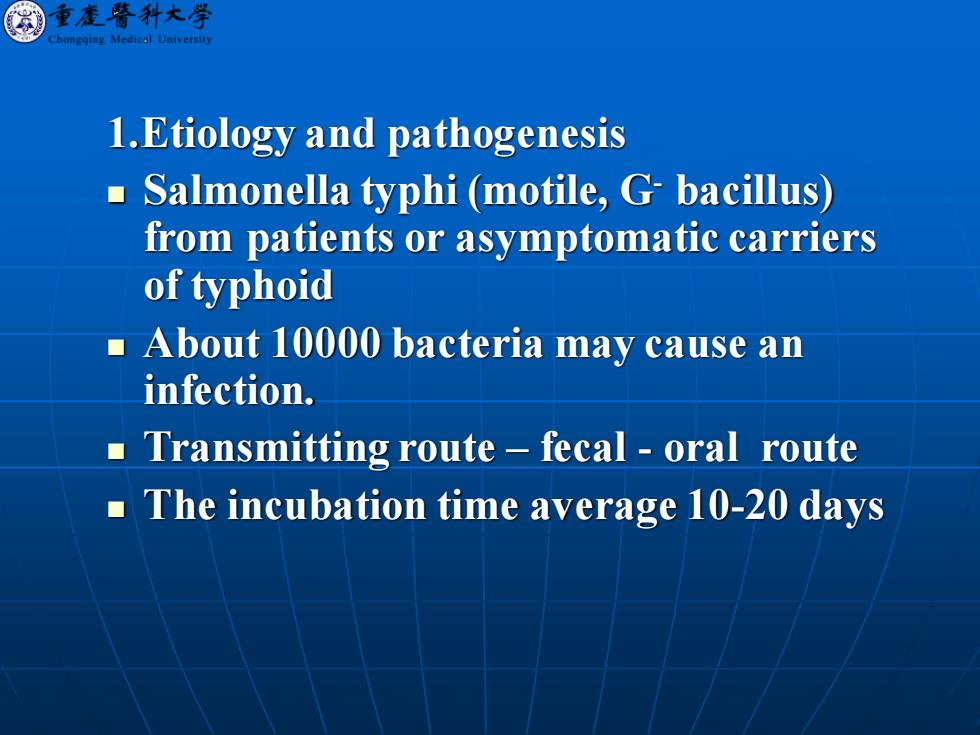
烟声走华利大辱 ongqing Medical University 1.Etiology and pathogenesis Salmonella typhi (motile,G bacillus) from patients or asymptomatic carriers of typhoid About 10000 bacteria may cause an infection. Transmitting route fecal oral route The incubation time average 10-20 days
1.Etiology and pathogenesis ◼ Salmonella typhi (motile, G- bacillus) from patients or asymptomatic carriers of typhoid ◼ About 10000 bacteria may cause an infection. ◼ Transmitting route – fecal - oral route ◼ The incubation time average 10-20 days